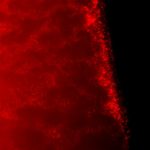Link to Pubmed [PMID] – 16326699
J. Biol. Chem. 2006 Jan;281(3):1313-6
Two-component regulatory signal transduction systems are important elements of the adaptative response of prokaryotes to a variety of environmental stimuli. Disruption of PhoP-PhoR in Mycobacterium tuberculosis dramatically attenuates virulence, implying that this system directly and/or indirectly coordinates the expression of important virulence factors whose identity remains to be established. Interestingly, in knockingout the PhoP-PhoR two-component system in M. tuberculosis Mt103, dramatic changes in the colonial morphology, cording properties, and reactivity of the mutant strain to the basic dye neutral red, all intrinsic properties of tubercle bacilli known to correlate with virulence, were noted. Because deficiencies in the ability of the mutant to form serpentine cords and stain with the dye are likely the results of alterations of its cell envelope composition, we undertook to analyze the lipid content of phoP and phoP-phoR mutants constructed in two different strains of M. tuberculosis. Our results indicate that PhoP coordinately and positively regulates the synthesis of methyl-branched fatty acid-containing acyltrehaloses known to be restricted to pathogenic species of the M. tuberculosis complex, namely diacyltrehaloses, polyacyltrehaloses, and sulfolipids. Evidence is also provided that PhoP but not PhoR is required for the production of these lipids. This work represents an important step toward the functional characterization of PhoP-PhoR and the understanding of complex lipid synthesis in M. tuberculosis.


